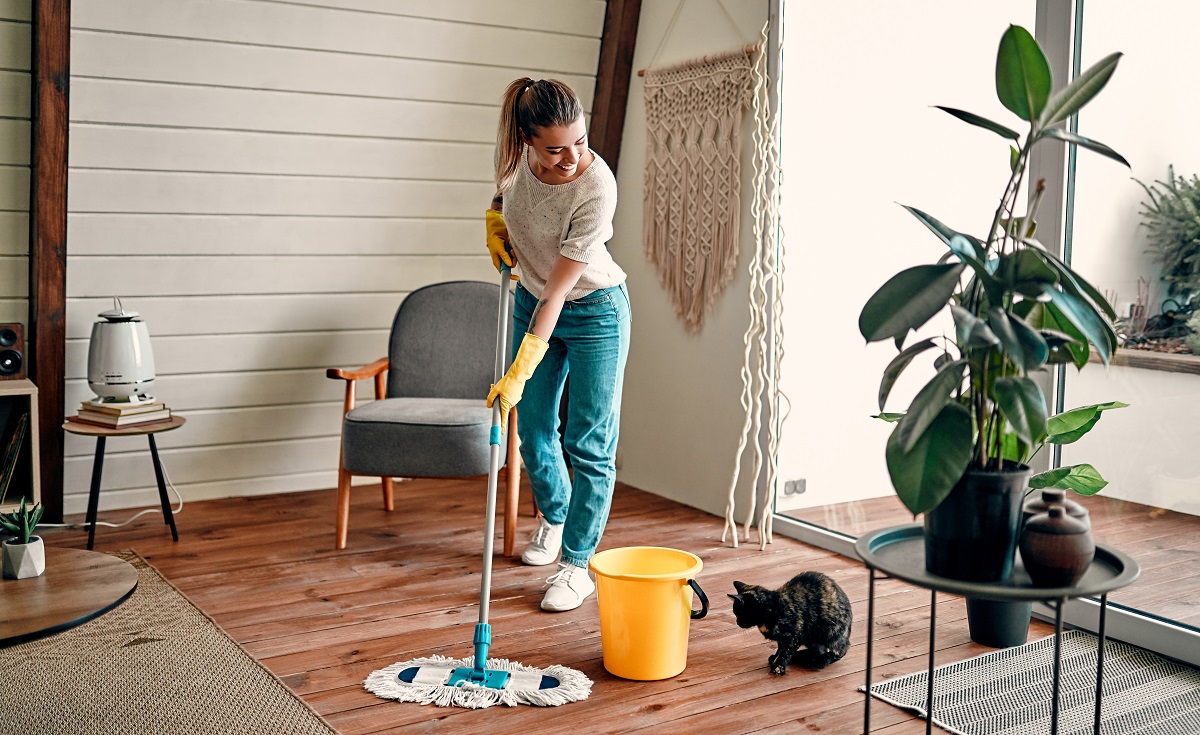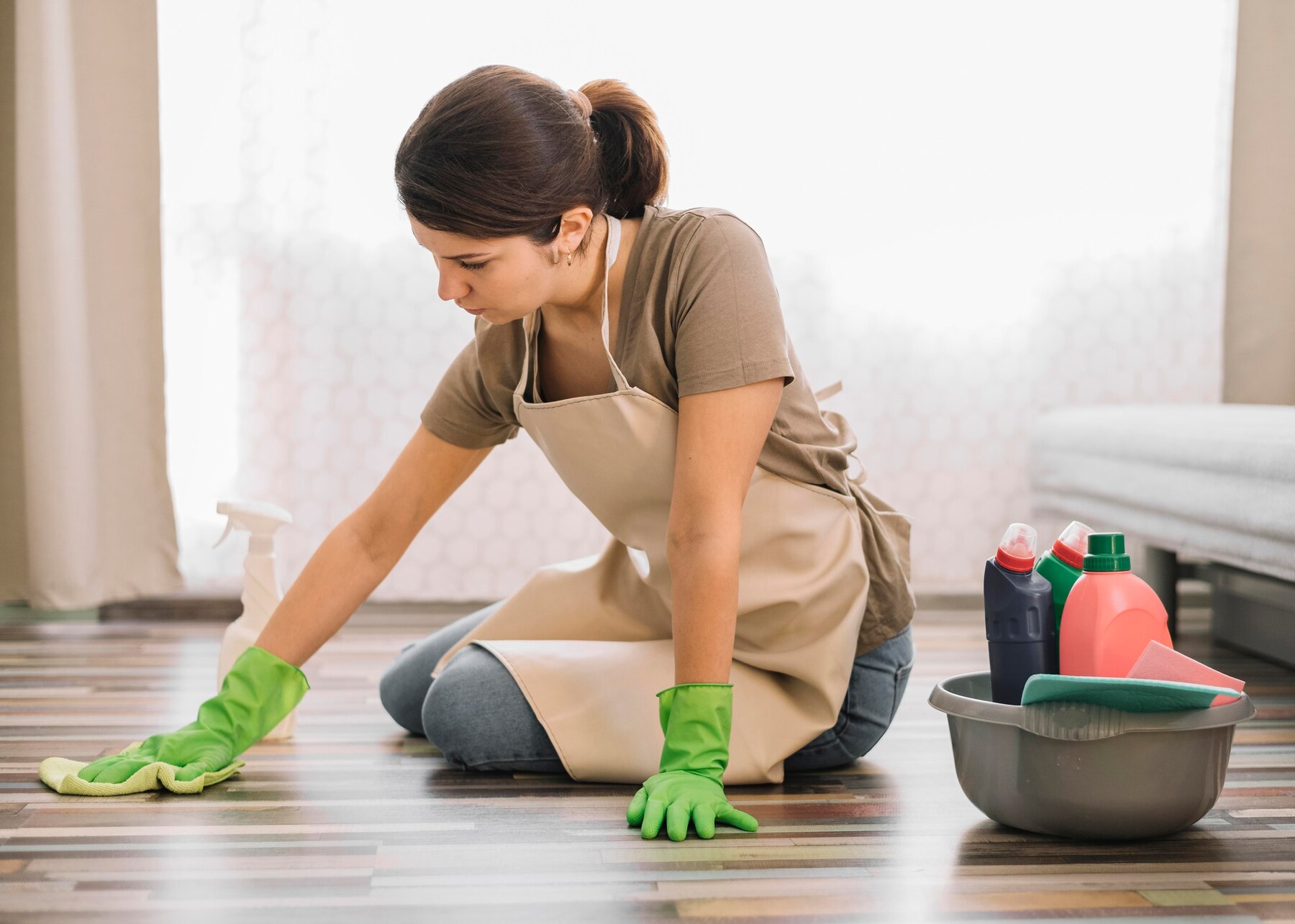Detailed Everyday Cleaning Overview: Specifically How to Scrub the Surfaces, Vacuum Carpets, and Clear Out Any Clutter Effectively
Detailed Everyday Cleaning Overview: Specifically How to Scrub the Surfaces, Vacuum Carpets, and Clear Out Any Clutter Effectively
Blog Article
Comprehending the Need for Thoroughly Sanitizing and Sterilizing Often Touched Surfaces in High-Traffic Locations
In the realm of public health and wellness and security, the meticulous sanitation and sanitization of often touched surfaces in high-traffic areas stand as vital measures in avoiding the spread of damaging pathogens. The significance of this technique prolongs far beyond simple cleanliness, delving right into the realm of condition avoidance and area wellness. By exploring the different elements of surface disinfection, from the threats connected with disregarding cleaning methods to the effective approaches that can be utilized, a more clear understanding arises of the vital role these practices play in safeguarding public health. As we navigate this discussion, it ends up being apparent that the ramifications of thorough surface disinfection reverberate not only within the confines of a specific setting yet additionally resonate on a broader range, impacting the health and safety of individuals across diverse common setups.
Value of Surface Area Sanitation
Highlighting the detailed disinfection of high-traffic surface areas is important in maintaining a sanitary atmosphere and stopping the spread of harmful pathogens. High-touch surfaces such as door manages, light buttons, lift buttons, and countertops work as reproducing premises for infections and germs. Routine sanitation of these surface areas is necessary to lower the risk of contamination and transmission of health problems.
By implementing a robust disinfection procedure, companies and institutions can develop a more secure setting for clients, site visitors, and staff members. Appropriate surface area disinfection not only minimizes the spread of contagious illness yet also infuses self-confidence in the tidiness and security of the premises. This aggressive strategy shows a dedication to health and wellness, which is specifically essential in high-traffic areas where the probability of exposure to pathogens is heightened.
Additionally, surface area disinfection plays a crucial function in general infection control methods. Integrated with hand health practices, using masks, and preserving physical distancing, comprehensive disinfection of high-touch surface areas develops a thorough protection versus the transmission of dangerous microbes. Focusing on surface area sanitation is an essential element of a holistic strategy to health and wellness and safety in common rooms.
Dangers of Disregarding Cleansing Practices
Disregarding complete sanitation of high-traffic surface areas significantly increases the threat of viral and microbial contamination, presenting a serious danger to the health and wellness and safety of people frequenting these rooms. Failing to implement correct cleansing techniques can result in the buildup and spread of dangerous virus, including bacteria and infections, on regularly touched surfaces such as doorknobs, hand rails, lift buttons, and kitchen counters.

Moreover, overlooking the value of extensive cleansing not only compromises the well-being of individuals but additionally undermines efforts to maintain a hygienic and clean environment. It is crucial to identify the significance of correct sanitation methods in protecting against the spread of infections and securing public health and wellness.
Efficient Disinfection Methods
To maintain ideal cleanliness and decrease the risk of contamination on high-traffic surfaces, using reliable disinfection approaches is essential. One of the most efficient and usual disinfection techniques is using chemical disinfectants.
An additional effective method is using UV-C light. UV-C light has been shown to be reliable in eliminating a wide variety of microorganisms by disrupting their DNA structure, look at more info thus stopping them from reproducing. However, it is necessary to utilize UV-C light properly, guaranteeing that the right strength and direct exposure time are applied to attain the preferred disinfection outcomes.
In addition, using steam cleansing as a sanitation method can be very efficient, especially on surfaces that are heat-resistant. Heavy steam can pass through permeable surfaces and eliminate bacteria, viruses, and various other pathogens successfully. When using vapor cleansing, it is very important to make sure that the surface reaches the called for temperature for an enough amount of time to guarantee appropriate disinfection.
Effect on Public Wellness
The maintenance of high criteria of tidiness and sanitation on high-traffic surface areas plays a vital function in safeguarding public wellness. Often touched surfaces in areas with high tramp, such as doorknobs, hand rails, lift buttons, and toilet facilities, offer as reproducing premises for dangerous virus.
In high-traffic locations like airports, colleges, healthcare facilities, and public transportation systems, the effect of rigorous sanitation measures can not be underrated. Prioritizing the sanitization of frequently touched surfaces is a proactive technique to promoting public wellness and boosting the safety of people in shared areas.
Applying Routine Cleaning Up Protocols
Quickly instituting and sticking to a consistent timetable of cleansing protocols is paramount for maintaining the cleanliness and safety of high-traffic surface areas. Routine cleaning procedures are essential in protecting against the buildup of germs and pathogens on often touched surfaces, specifically in areas with high foot traffic. By carrying out an organized strategy to cleansing, organizations can effectively lower the threat of illness transmission and develop a healthier atmosphere for workers, customers, and the public.
To establish an effective cleansing schedule, it is critical to identify high-traffic locations that call for constant attention. These areas might include doorknobs, handrails, lift switches, restroom facilities, and shared tools. Carrying out a routine cleansing program that targets these surface areas numerous times a day can considerably decrease the spread of unsafe bacteria and infections.
Furthermore, using suitable cleaner and anti-bacterials is vital to making sure that surface areas are thoroughly disinfected. Normal training of cleansing team on appropriate cleansing methods and the importance of adherence to the cleansing timetable is also important in keeping a hygienic setting. By focusing on regular cleansing protocols, organizations can advertise the wellness and well-being of individuals who connect with these high-traffic surface areas.

Verdict
To conclude, it is critical to prioritize comprehensive sanitation and sanitization of often touched surfaces in high-traffic locations to avoid the spread of unsafe virus and preserve public wellness. Neglecting appropriate cleaning practices can boost the risk of contamination and transmission of conditions. By implementing routine cleaning protocols and blog using effective sanitation methods, we can develop a much safer setting for everybody (Vacuum Carpets). It is vital to acknowledge the relevance of keeping tidy surfaces in high-traffic locations to make certain the well-being of the area.
In the world of public health and wellness and safety and security, the meticulous sanitation and sanitization of regularly touched surface areas in high-traffic areas stand as extremely important actions in preventing the spread of unsafe pathogens. By checking out the various facets of surface area disinfection, from the risks linked with overlooking cleansing procedures to the effective approaches that can be employed, a clearer understanding arises of the vital duty these methods play in protecting public health and wellness.Furthermore, using steam cleaning as a sanitation technique can be highly efficient, specifically on surface areas that are heat-resistant. When utilizing vapor cleaning, it is essential to make certain that the surface gets to the called for temperature for an adequate amount of time to ensure appropriate disinfection.
In final thought, it is critical to focus on thorough go to website sanitation and sanitization of regularly touched surface areas in high-traffic locations to avoid the spread of harmful pathogens and keep public health.
Report this page